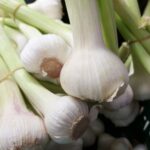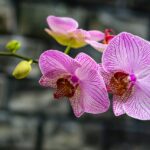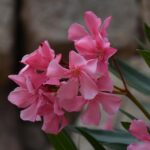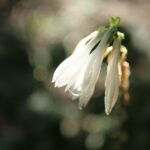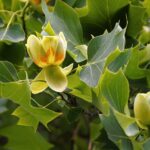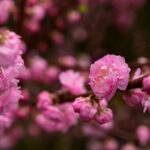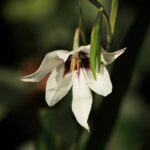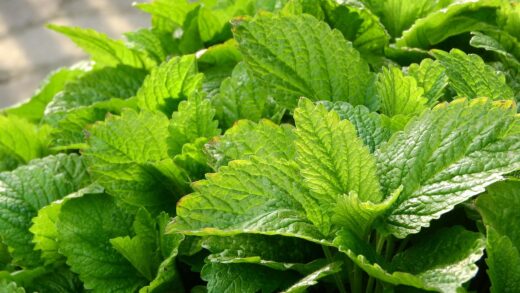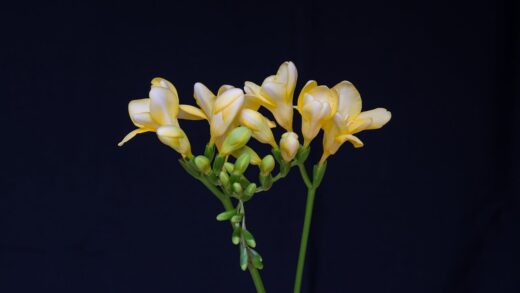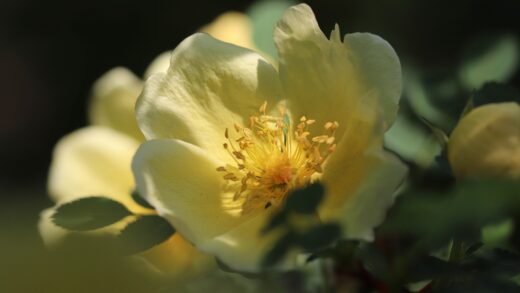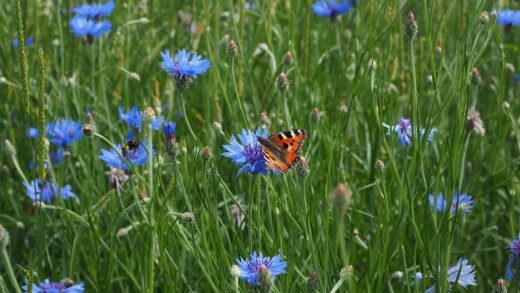The Kousa dogwood, also known as the Japanese or Chinese dogwood, is a deciduous shrub or small tree native to the forests of Asia, possessing stunning ornamental value that can grace gardens for decades with proper care. The key to the plant’s health, abundant flowering, and fruit yield lies in a proper understanding of its water balance and the implementation of expert irrigation practices. Its water needs depend on numerous factors, including climate, soil type, the plant’s age, and the season, so irrigation can never be a schematic, mechanical process. The secret to success is based on continuous observation and a quick, adequate response to the plant’s signals, ensuring optimal moisture content in the root zone without the risk of overwatering.
The Kousa dogwood is fundamentally considered a plant with medium water requirements, accustomed in its natural habitat of cool, humid mountain forests to regular rainfall and well-drained but consistently slightly moist soil. This genetic heritage also determines its behavior in the garden, especially in warmer, drier climates where natural precipitation alone is insufficient to meet its needs. The first signs of water deficiency are wilting leaves, browning and premature dropping of leaf edges, and a lack of flowering or a reduction in the size of the inflorescence. Chronic water shortage can lead to the plant’s weakening, increased susceptibility to diseases, and ultimately its demise, making prevention crucial.
The plant’s water needs vary significantly at different stages of its life cycle. Freshly planted, young specimens are particularly sensitive to drying out, as their root systems have not yet penetrated deep enough to draw water from the deeper soil layers. For them, regular, deep watering is essential for the first two to three years after planting, especially during the hot, dry summer months. Older, well-established, mature specimens tolerate shorter dry periods much better, but prolonged droughts also take a toll on them. In such cases, supplemental irrigation is essential to maintain their vitality and ensure abundant flowering the following year.
The type of soil fundamentally influences the frequency and amount of irrigation, so it is worthwhile to thoroughly assess the soil conditions before planting. Well-draining, loose, sandy soils dry out quickly, requiring more frequent but smaller applications of water to minimize water loss. In contrast, heavy, clay soils retain moisture for a long time, so they need to be watered less often but more thoroughly to allow the water to reach the deeper root zone. Waterlogging, where the roots are constantly standing in water, is at least as harmful as desiccation, as it can cause root rot, so good drainage is a fundamental requirement for all soil types.
The correct practice of irrigation
The golden rule for watering Kousa dogwood is deep but infrequent watering, as opposed to frequent, shallow sprinkling. Deep watering encourages the roots to grow towards the deeper, cooler, and moister layers of the soil, which makes the plant more stable and drought-tolerant. During a thorough watering, the water should moisten the soil to a depth of at least 20-30 centimeters around the plant’s trunk. The actual amount of water to be applied depends on the soil structure and weather conditions, but as a general guideline, applying 25-40 liters of water per week is recommended for a mature shrub during hot, rainless periods. The best time for irrigation is in the early morning or late evening hours when evaporation loss is at its lowest.
The choice of irrigation technique is also an important factor in terms of efficiency. The most recommended method is drip irrigation or the use of a soaker hose, as these systems deliver water slowly, evenly, and directly to the root zone, minimizing evaporation and the amount of water that gets on the foliage. Wetting the foliage should be avoided, as moist leaves favor the development of various fungal diseases, such as powdery mildew or anthracnose. If sprinkler irrigation is used, it should be timed for the early morning hours so that the leaves have time to dry completely during the day.
Checking the soil moisture content is essential for establishing the correct irrigation rhythm. The easiest way to do this is with the finger test: insert your finger 5-10 centimeters deep into the soil next to the plant’s base. If the soil feels dry at this depth, it is time to water. A more professional solution is to use soil moisture sensors, which provide accurate data on the condition of the root zone, helping to avoid overwatering. Keeping an eye on the weather forecast also helps to optimize irrigation; it is unnecessary to apply a large amount of water before an impending heavy rain.
Mulching is one of the most effective agronomic techniques for optimizing the water balance of the Kousa dogwood and reducing its irrigation needs. A 5-10 cm thick layer of organic mulch (e.g., pine bark, wood chips, compost) spread on the soil surface around the plant’s trunk has numerous benefits. It significantly reduces soil evaporation, keeps the root zone cool and moist, prevents the growth of weeds that would compete for water, and enriches the soil with valuable nutrients as it decomposes. The mulch should be spread a few centimeters away from the trunk to avoid moisture buildup against the stem and the development of potential diseases.
Critical periods and signs of water stress
There are periods in the life of a Kousa dogwood when water supply is particularly critical for the plant’s health and ornamental value. One such period is during spring bud break and flowering, which typically occurs from late May to June. Adequate water supply is essential for abundant and prolonged flowering, as the development of the flower bracts is an extremely water-intensive process. A drought during this period can significantly reduce the size and number of flowers and the flowering duration, and may even lead to the drying and dropping of flower buds.
Summer heat and dry, drought-like conditions pose the greatest challenge for the Kousa dogwood, especially for young, not yet fully established specimens. High temperatures and intense sunlight increase the plant’s transpiration, while the soil’s moisture content decreases rapidly. During this period, regular, deep watering is essential to replenish the lost water. Slight leaf wilting observed in the afternoon is not necessarily a serious problem if the leaves become turgid again after the evening cool-down, but foliage that is still wilted in the morning is a clear sign of water deficiency and requires immediate action.
Autumn is also an important period for the Kousa dogwood’s water supply, even though the plant is approaching the end of its growing season. The differentiation of the next year’s flower buds occurs in the autumn months, which also requires adequate soil moisture. A dry autumn can negatively affect the quality and quantity of the following spring’s bloom. Furthermore, before the onset of winter, it is important to thoroughly prepare the plant for the frosty period with a final, generous watering, done before the ground freezes. This helps prevent winter desiccation, which can occur when the plant is unable to take up water from the frozen soil.
Timely recognition of the symptoms of water deficiency is crucial to avoid permanent damage. The very first and most obvious sign is the wilting and drooping of the leaves. Following this, the leaf margins turn brown and dry out, resulting in a “scorched” appearance. In cases of severe or prolonged water shortage, the leaves turn yellow and fall off prematurely, growth slows down or stops completely, and the plant’s overall condition deteriorates. If these signs are observed, perform a thorough, deep watering immediately and pay more attention to regular water supply in the future, correcting the irrigation practice if necessary.
Special considerations and common mistakes
For the successful cultivation of Kousa dogwood, some special needs must be considered that go beyond general irrigation rules. One of these is soil pH; the Kousa dogwood prefers slightly acidic to neutral, well-structured soils rich in humus. In calcareous, alkaline soils, iron chlorosis often occurs, manifesting as yellowing of the leaves, and although this is not a direct water supply problem, an inappropriate pH can inhibit nutrient and water uptake. Using rainwater for irrigation is particularly beneficial as it is naturally soft and slightly acidic, unlike often hard, high-lime tap water.
A common mistake is the under- or overwatering of Kousa dogwoods grown in containers. The root system of potted plants is confined to a much more limited space, and the growing medium dries out faster than garden soil, especially in sunny, windy locations. Therefore, containerized specimens need to be watered more frequently, even daily during the summer heat, ensuring that excess water can freely drain through the holes at the bottom of the pot. Overwatering, or standing water, is just as dangerous, as it quickly leads to root rot in the anaerobic medium. The use of an appropriately sized pot with good drainage and a high-quality, loose-structured potting mix is essential.
The irrigation of newly planted Kousa dogwoods requires special care. A thorough soaking irrigation after planting is essential to ensure there are no air pockets between the root ball and the surrounding soil. During the first growing season, the soil should be kept consistently slightly moist, but not wet, to promote vigorous root development. It would be a mistake to water only in the immediate vicinity of the trunk; the water should be applied along the edge of the root ball and beyond to encourage the roots to spread outwards into the surrounding soil.
Finally, one of the most common mistakes is the inflexibility of the watering routine. Many people tend to water on a fixed schedule, for example, every other day, regardless of the current weather or soil conditions. This approach often leads to overwatering during cooler, rainier periods or insufficient water supply during heatwaves. The key to successful care is flexibility and continuous adaptation to the plant’s needs. Always check the soil moisture before watering, observe the plant’s signals, and consider the weather conditions to ensure the Kousa dogwood receives the best possible care.

